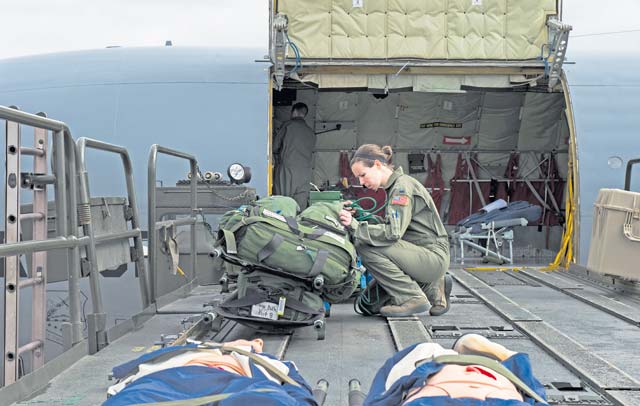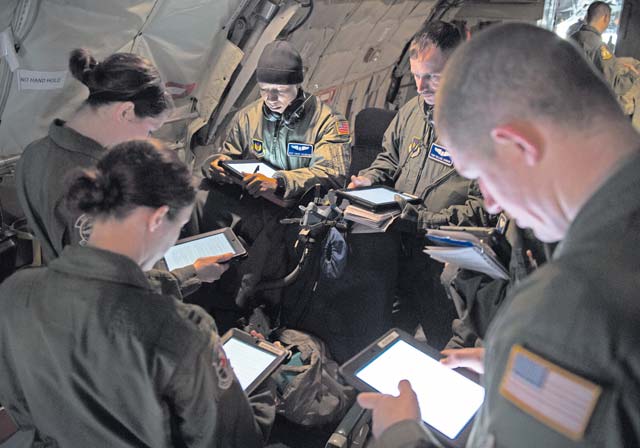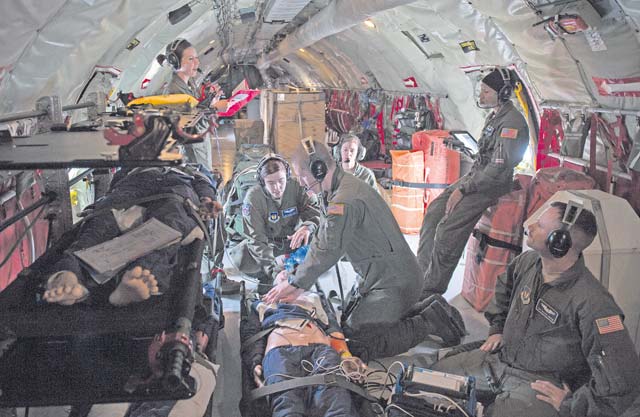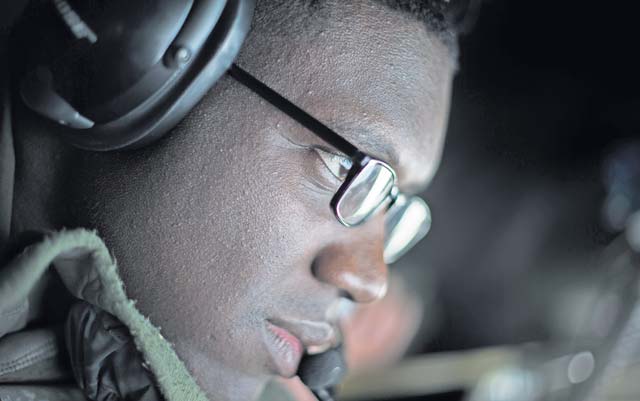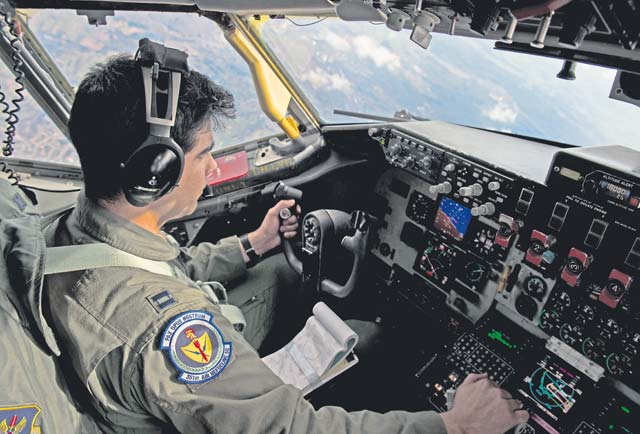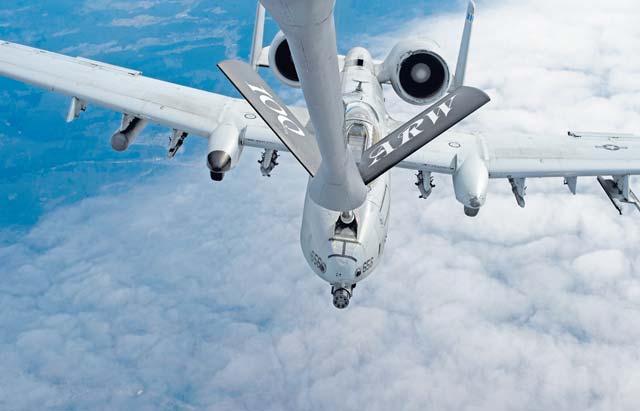
A KC-135 Stratotanker aircrew from Royal Air Force Mildenhall, England, supported the 354th Expeditionary Fighter Squadron’s deployment to Europe by providing aerial refueling to A-10 Thunderbolt IIs March 23 to 27 above Ramstein.
During their weeklong visit to Ramstein, the aircrew refueled more than 20 A-10s, honing their ability to keep aircraft flying.
“Our main goal here is fueling the A-10s for their deployment in support of Operation Atlantic Resolve,” said Capt. Bobby Stanford, 100th Air Refueling Wing pilot. “It’s been really successful. Everyday we’ve been able to refuel aircraft so they can complete their mission.”
Inside the KC-135, co-pilots took part in the natural progression of their career field.
“Two of our pilots were also able to perform aircraft commander upgrade training,” Stanford said. “It is required on-the-job training for a co-pilot to become an aircraft commander. As a co-pilot, your primary duty is to learn the aircraft and become proficient in flying. As an aircraft commander, you are required to take it a step further by becoming responsible for making decisions concerning the execution of the mission and ensuring the safety of everyone on board.”
Pilots weren’t the only ones training thousands of feet above Ramstein. Members of the 86th Aeromedical Evacuation Squadron also had the opportunity to train on board a KC-135 as it flew overhead.
“The KC-135 is one of the primary aircraft used by the Air Force for aeromedical evacuation,” said Tech. Sgt. William Johnson, 86th AES aeromedical evacuation technician. “Ramstein doesn’t have any assigned, but it’s still vital that our flight nurses and aeromedical evacuation technicians are familiar with the aircraft and have the opportunity to exercise the aircraft specific requirements. This provides (the European Command) and (African Command) with aeromedical evacuation crewmembers who are always ready.”
Airmen from the 100th ARW also learned more about aeromedical evacuation from working firsthand with the 86th AES.
“I’ve been out here doing aerial refueling, but a big portion has also been coordinating with the aeromedical teams,” said Senior Airman DeVaughn Granger, 100th ARW boom operator. “The first day was eye opening because we don’t see a lot of aeromedical missions. I’ve only worked with aeromedical teams twice in my four-year career. I was able to read my Air Force instructions then see it in front of me. The experience really put one and one together.”
The knowledge gained from this training not only developed Airmen, it also strengthens the United States’ commitment to Europe, demonstrating its dedication to peace and stability in the region.
